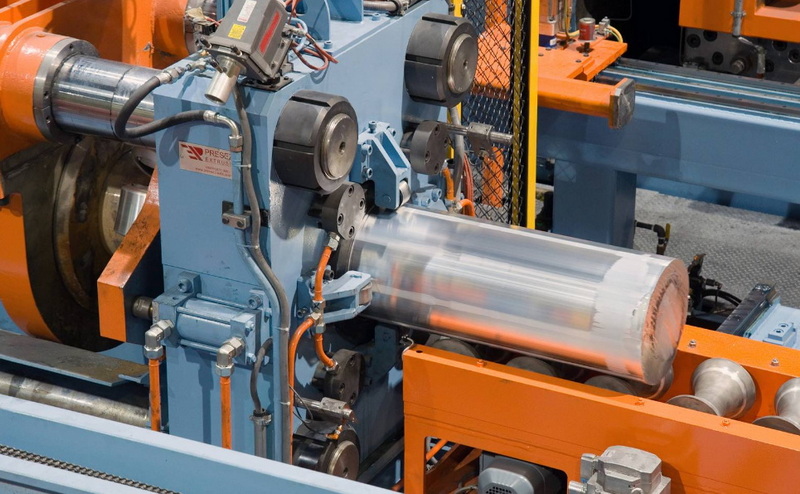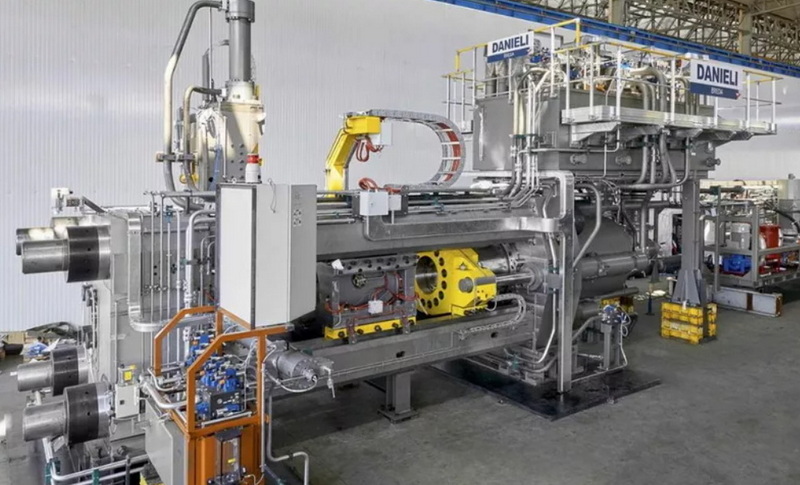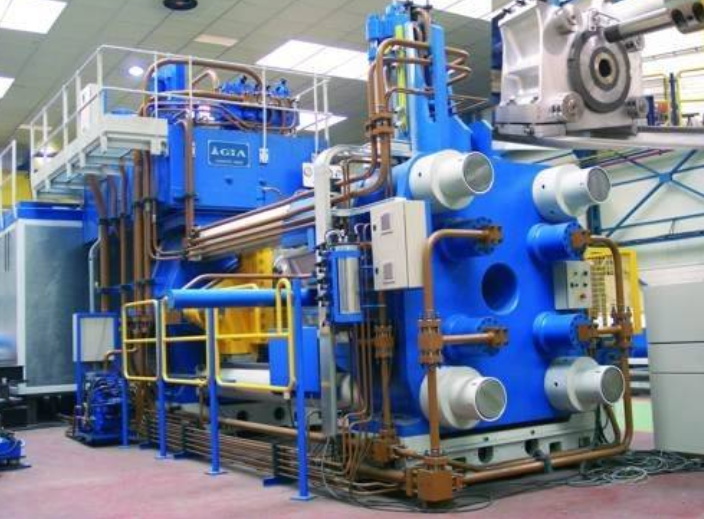Content Menu
● Understanding Aluminum Extrusion Press Operations
● Key Components of a Safety Audit
>> 1. Personal Protective Equipment (PPE) Assessment
>> 2. Machine Guarding Inspection
>> 3. Lockout/Tagout Procedures
>> 4. Training Program Evaluation
>> 5. Emergency Preparedness
>> 6. Ventilation and Air Quality
>> 7. Fire Safety Measures
>> 8. Ergonomics and Manual Handling
>> 9. Maintenance and Inspection Records
>> 10. Incident Reporting and Analysis
● Conducting the Safety Audit
>> Pre-Audit Preparation
>> On-Site Audit Process
>> Post-Audit Activities
● Best Practices for Aluminum Extrusion Press Safety
● Leveraging Technology for Enhanced Safety
● Conclusion
● FAQ
>> 1. How often should safety audits be conducted for aluminum extrusion presses?
>> 2. What are the most common safety hazards associated with aluminum extrusion press operations?
>> 3. How can employees be encouraged to actively participate in safety initiatives?
>> 4. What role does proper maintenance play in aluminum extrusion press safety?
>> 5. How can new technologies improve safety in aluminum extrusion press operations?
● Citations:
Aluminum extrusion press safety is a critical concern in manufacturing facilities that utilize these powerful machines. Conducting regular safety audits is essential to ensure the well-being of employees and maintain compliance with industry standards. This comprehensive guide will walk you through the process of conducting a thorough safety audit for aluminum extrusion presses, highlighting key areas of focus and best practices.

Understanding Aluminum Extrusion Press Operations
Before delving into the safety audit process, it's crucial to have a solid understanding of how aluminum extrusion presses work. These machines use high pressure to force heated aluminum billets through a die, creating profiles of various shapes and sizes[1]. The process involves several steps:
1. Preheating the aluminum billet and steel die
2. Loading the billet into the extrusion press container
3. Applying pressure to force the aluminum through the die
4. Controlled cooling of the extruded profile
5. Cutting the profile to desired lengths
6. Further processing and finishing as needed
Key Components of a Safety Audit
1. Personal Protective Equipment (PPE) Assessment
Proper PPE is crucial for protecting workers from various hazards associated with aluminum extrusion press operations[1]. During the safety audit, assess the availability, condition, and proper use of:
- Safety glasses or goggles
- Cut-resistant gloves
- Heat-resistant clothing
- Steel-toed boots
- Hearing protection
2. Machine Guarding Inspection
Ensure all moving parts of the extrusion press are properly guarded to prevent accidental contact[1]. Check for:
- Safety interlocks on access doors
- Emergency stop buttons within easy reach
- Proper guarding around pinch points and moving components
3. Lockout/Tagout Procedures
Verify that strict lockout/tagout procedures are in place for maintenance and repair work[1]. The audit should confirm:
- Written procedures for each piece of equipment
- Proper lockout devices and tags are available
- Employees are trained in lockout/tagout procedures
- Regular audits of the lockout/tagout process are conducted
4. Training Program Evaluation
Comprehensive training is essential for all operators and maintenance personnel[1]. Review the training program to ensure it covers:
- Safe operating procedures for the extrusion press
- Emergency response protocols
- Proper handling and storage of materials
- Recognition of potential hazards
5. Emergency Preparedness
Assess the facility's readiness for emergencies related to aluminum extrusion press operations[2]. Check for:
- Clearly marked emergency exits
- Accessible fire extinguishers and first aid kits
- Posted emergency contact information
- Regular emergency drills and training
6. Ventilation and Air Quality
Proper ventilation is crucial in aluminum extrusion facilities to dissipate heat and fumes[2]. Evaluate:
- Ventilation system effectiveness
- Air quality monitoring procedures
- Maintenance schedules for ventilation equipment
7. Fire Safety Measures
Given the combustible nature of aluminum under certain conditions, fire safety is paramount[2]. Inspect:
- Fire suppression systems
- Fire alarm functionality
- Clear access to fire exits
- Fire extinguisher locations and maintenance
8. Ergonomics and Manual Handling
Assess workstations and processes for ergonomic risks[1]. Look for:
- Adjustable equipment and tools
- Proper lifting aids and techniques
- Job rotation schedules to reduce repetitive motions
- Employee training on ergonomic best practices
9. Maintenance and Inspection Records
Review maintenance logs and inspection records for the aluminum extrusion press and related equipment[1]. Ensure:
- Regular preventive maintenance is performed
- Equipment inspections are conducted at appropriate intervals
- Issues identified during inspections are promptly addressed
10. Incident Reporting and Analysis
Evaluate the facility's incident reporting system and analysis procedures[1]. Check for:
- Clear reporting protocols for accidents and near-misses
- Thorough investigation processes
- Implementation of corrective actions based on incident analyses
- Regular safety performance metric tracking

Conducting the Safety Audit
Pre-Audit Preparation
1. Review previous audit reports and corrective actions
2. Familiarize yourself with current industry standards and regulations
3. Prepare a comprehensive checklist based on the key components outlined above
4. Schedule the audit with relevant personnel and departments
On-Site Audit Process
1. Begin with a opening meeting to explain the audit process and objectives
2. Conduct a walkthrough of the aluminum extrusion press area
3. Observe operations and interview employees
4. Review documentation and records
5. Test emergency procedures and equipment
6. Document findings and take photographs or videos as evidence
Post-Audit Activities
1. Analyze audit findings and identify areas for improvement
2. Develop a detailed report with recommendations
3. Present findings to management and relevant stakeholders
4. Create an action plan to address identified issues
5. Schedule follow-up audits to ensure corrective actions are implemented
Best Practices for Aluminum Extrusion Press Safety
To maintain a high level of safety in aluminum extrusion press operations, consider implementing these best practices:
1. Implement a robust safety management system
2. Conduct regular safety training and refresher courses
3. Encourage employee participation in safety initiatives
4. Stay updated on industry standards and technological advancements
5. Foster a culture of continuous improvement in safety practices
Leveraging Technology for Enhanced Safety
Modern technology can significantly improve safety in aluminum extrusion press operations. Consider incorporating:
1. Real-time monitoring systems for press operations
2. Advanced sensors for detecting abnormalities
3. Automated emergency shutdown systems
4. Digital tracking of maintenance and inspection records
5. Virtual reality training simulations for operators
Conclusion
Conducting a comprehensive safety audit for aluminum extrusion presses is crucial for maintaining a safe work environment and ensuring compliance with industry standards. By focusing on key areas such as PPE, machine guarding, training, and emergency preparedness, facilities can significantly reduce the risk of accidents and injuries. Regular audits, combined with a commitment to continuous improvement and the adoption of new safety technologies, will help create a culture of safety that protects workers and enhances overall operational efficiency.

FAQ
1. How often should safety audits be conducted for aluminum extrusion presses?
Safety audits for aluminum extrusion presses should be conducted at least annually, with more frequent inspections for high-risk areas or after significant changes in equipment or processes. Regular internal audits can be performed quarterly, while comprehensive third-party audits are typically done annually.
2. What are the most common safety hazards associated with aluminum extrusion press operations?
The most common safety hazards in aluminum extrusion press operations include:
- High temperatures leading to burn risks
- Moving machinery parts causing crush injuries
- Exposure to hydraulic fluids and chemicals
- Ergonomic issues from repetitive motions
- Noise-induced hearing loss
- Fire and explosion risks due to aluminum dust
3. How can employees be encouraged to actively participate in safety initiatives?
Encouraging employee participation in safety initiatives can be achieved through:
- Implementing a safety suggestion program with rewards
- Forming safety committees with worker representation
- Conducting regular safety meetings and toolbox talks
- Recognizing and rewarding safe behaviors and practices
- Providing opportunities for employees to lead safety training sessions
4. What role does proper maintenance play in aluminum extrusion press safety?
Proper maintenance is crucial for aluminum extrusion press safety as it:
- Prevents equipment failures that could lead to accidents
- Ensures all safety features and guards are functioning correctly
- Identifies potential hazards before they cause incidents
- Maintains the efficiency and reliability of the press
- Extends the lifespan of the equipment, reducing the risk of age-related failures
5. How can new technologies improve safety in aluminum extrusion press operations?
New technologies can enhance safety in aluminum extrusion press operations by:
- Providing real-time monitoring of press operations and safety parameters
- Implementing predictive maintenance systems to prevent equipment failures
- Utilizing advanced sensors and alarms for early detection of abnormalities
- Offering virtual reality training simulations for operators to practice safety procedures
- Automating hazardous tasks to reduce human exposure to risks
Citations:
[1] https://www.yjing-extrusion.com/how-to-ensure-employee-safety-in-aluminum-extrusion-press-operations.html
[2] https://www.yjing-extrusion.com/what-are-the-key-safety-measures-for-alco-aluminum-extrusion-press.html
[3] https://superiorextrusion.com
[4] https://www.intouch-quality.com/blog/extrusions-inspection-process
[5] https://www.linkedin.com/pulse/four-precautions-aluminum-extrusion-machine-operators-when-operating
[6] https://www.extrusion.net
[7] https://www.outashi.com/blog/safety-precautions-in-operating-aluminum-extrusion-machine-id35.html
[8] https://www.linkedin.com/pulse/precautions-aluminum-extrusion-machine-operators-when-operating-jrxoc
[9] https://www.justice.gov/opa/pr/aluminum-extrusion-manufacturer-agrees-pay-over-46-million-defrauding-customers-including






















